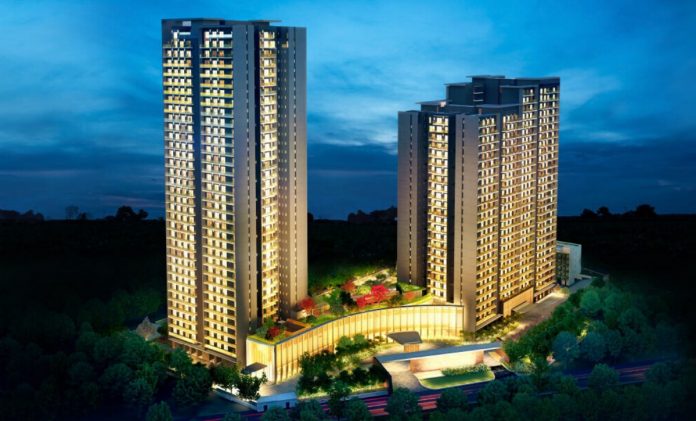This article has been written by Saumya Krishnani, pursuing a Diploma in Business Laws for In-House Counsels from LawSikho.
Table of Contents
Introduction
The real estate industry is one of India’s largest employers and contributes significantly to the country’s economy. However, it has suffered greatly as a result of a variety of factors over the last few years. Foreign direct investments in the real estate sector are currently growing steadily, especially in commercial real estate, with green shoots emerging in the residential sector as well.
The Indian government and some state governments have taken steps to assist the real estate sector by providing some concessions.
Because of various malpractices in the funding process for projects, combined with increasing credit score danger between builders, the Government of India has come down hard on financial establishments, resulting in financial establishments pulling the plug on real estate lending.
For a long time, the real estate industry has been requesting industry status. Since receiving infrastructure status, the affordable housing segment has seen a boost. According to experts, granting a similar status to the entire real estate sector would boost real estate activity and help attract much-needed investments. This, combined with a single-window clearance scheme, would revolutionize the industry.
Problem arises due to Covid-19
In 2021, the pandemic could have an effect on consumer preferences in terms of real estate: larger layouts with better protection, hygiene, and captive facilities could attract more buyers. Satellite offices in non-conventional micro markets, i.e. outside of CBDs (Central Business Districts), can be absorbed quicker and more efficiently in terms of commercial real estate.
With the widespread adoption of WFH (Work from Home) in the IT sector, ITE’s buildings will experience moderate vacancies in the first quarter of 2021, but as the threat of COVID is reduced, we will see greater absorption in the second half of the year.
The rise in FDI and Atmanirbhar Bharat points to a good recovery in commercial real estate in the second half of the year. After reaching an all-time high throughout the pandemic, retail vacancies are now on the decline, with increased uptake anticipated during 2021.
Despite the short-term disturbances, India’s commercial real estate market continues to draw long-term interest from occupiers and investors. With the government’s post-COVID relaxation, employers and workers are looking for the right combination of in-office and remote working choices.
Since the Corona virus entered the planet in December of 2019, a lot has changed. Businesses around the world came to a halt as countries took drastic steps to curb the pandemic, prompting monetary agencies to slash global growth predictions, including India’s.
The International Monetary Fund (IMF) said in its World Economic Outlook October 2020 report, titled ‘A Long and Difficult Ascent,’ that India’s economy will rise at a -10.3 percent pace in 2020, down -5.8 percentage points from the agency’s June forecast.
Following a 23.9 percent drop in GDP in the first quarter of FY21 compared to the same quarter the previous fiscal, global rating agencies S&P, Moody’s, and Fitch forecast the Indian economy to contract by 11.5 percent and 10.5 percent, respectively, in the current fiscal.
S&P Global Ratings cut its FY21 growth forecast for India to -9 percent from a previous estimate of -5 percent on September 14, 2020, as the country’s infection rate reached new highs. The COVID-19’s continued escalation is one factor impeding private economic activity. Asia-Pacific economist at S&P Global Ratings
Reforms which should be considered for the relief
The following reforms can be considered by the concerned authorities in order to complement and assist the real estate sector in recovering from the current recession, which is long overdue:
Pooling of Land
It is viewed as a viable alternative to land acquisition under the Right to Fair Compensation and Transparency in Land Acquisition, Rehabilitation, and Resettlement Act of 2013, which is more advantageous to landowners and less costly to developers. Land pooling generates less opposition from landowners because they are not required to give up their lands; instead, they willingly pool their land, which is then shaped into a large contiguous piece of land.
As a result, the government can consider further incentivizing land pooling for developers through reforms such as allowing higher floor area ratios for construction on pooled land. In addition, clarifications on the tax consequences and stamp duty application for land pooling should be given.
Infrastructure Status
Although affordable housing has been granted the status of “infrastructure,” allowing it to benefit from lower interest rates, tax breaks, and increased inflows of international and private capital, the same has not been granted to the real estate sector. The status of ‘infrastructure’ has long been and continues to be one of the most pressing demands of the real estate industry, which has been waiting for it to be declared in the budget.
Granting the real estate sector the status of “infrastructure” will assist developers in receiving a variety of benefits, including those mentioned above, as well as assisting in the difficult task of raising funds for projects.
Rates of Stamp Duty
Stamp duty reductions for property registration should be considered a national initiative. Although some states, such as Maharashtra, Karnataka, and Rajasthan, have reduced stamp duty rates for certain types of properties to be registered, most Indian states have ignored the Housing and Urban Affairs Secretary’s advice to lower stamp duty rates in order to boost real estate demand.
The state of Maharashtra has seen a revival of the real estate market as a result of lower stamp duty rates combined with low-interest rates on home loans.
Streamlining the Obtaining of Building Approvals Process
The procedures for obtaining building approvals vary from state to state in India, resulting in inconsistency in obtaining such approvals. Although some states, such as Maharashtra, have implemented a single-window clearance system for building approvals, the majority of Indian states still lack such a system. Furthermore, since there are numerous laws that apply to various land areas in a single State, a sense of uncertainty is generated. For example, there are different laws that apply to lands in the following areas:
- Municipal corporation areas
- Panchayat areas
As a result, regardless of which region of the state the proposed project is located, a single competent authority and overarching legislation for granting building approvals should be established.
In the year 2019, Finance Minister indicated that Real estate can get targeted
Both the RBI and the government, according to Finance Minister Nirmala Sitharaman, are working to resolve issues in the real estate sector. She hinted that the Centre would make changes to the current rules to assist those who have been harmed by the real estate industry.
The FM also acknowledged that a series of steps announced by the Modi government to revive the economy had not done anything to improve the real estate sector’s sentiments. “One particular sector that I have not touched on, but which has a lot of positive impact and also has the potential to influence the stock market,” the FM said.
Builders are struggling to repay loans to non-finance lending firms due to the housing market downturn. The fallout could spread to mainstream banks, according to Fitch Ratings’ Indian division, with around $10 billion in construction loans due to be repaid in the first half of 2020. In light of this, analysts are recommending that the ailing sector receive an immediate boost.
According to a new report by real estate research and analytics company Prop Equity, housing unit sales in India’s top nine cities dropped 10% in the third quarter of 2019 compared to the previous quarter, to 52,885 units. The second quarter of 2019 saw a 9% drops in sales. According to the company, the downturn in housing sales is attributed to a lack of new launches, a lack of buyer interest in older under-construction projects, and a liquidity shortage in the industry.
Lowering interest rates isn’t enough, and neither is lowering the GST on homes under construction. The current housing market slowdown is the product of a number of causes, many of which overlap. The mood of consumers has been swayed significantly. If renting a home and using ride-hailing services are more cost-effective and avoid large long-term financial commitments in an economy where job stability and career development are in question, people will not buy land – or even cars. Certainly, holding developers and car manufacturers solely responsible for the downturn in their respective industries is illogical.
Conclusion
Project delays are expected as a result of the shortage of building construction materials that India imports from China as a result of the pandemic and increasing tensions between the two countries. The situation will have a greater effect on premium-luxury housing projects that depend heavily on suppliers of fixtures and furnishings from China, which has been identified as the source of the outbreak. The time lag will not only cause housing projects to be delayed, but it will also raise the total cost of project construction because builders will have to rely on additional sources to meet their construction needs.
References
Students of Lawsikho courses regularly produce writing assignments and work on practical exercises as a part of their coursework and develop themselves in real-life practical skill.
LawSikho has created a telegram group for exchanging legal knowledge, referrals and various opportunities. You can click on this link and join:
 Serato DJ Crack 2025Serato DJ PRO Crack
Serato DJ Crack 2025Serato DJ PRO Crack











 Allow notifications
Allow notifications



